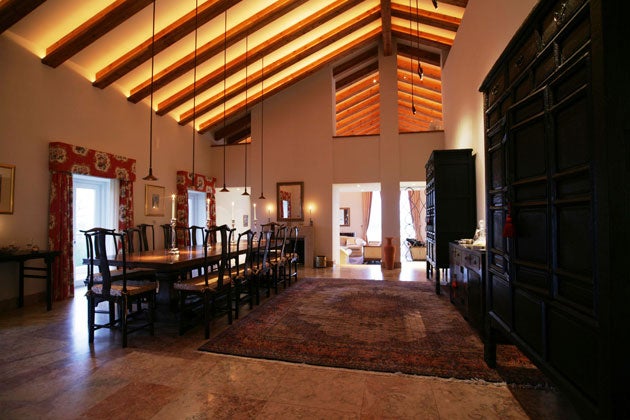The future of lighting: LEDs lead the way

"I can't stand a naked light bulb, any more than I can a rude remark or a vulgar action," said Blanche Dubois in Tennessee Williams' play, A Streetcar Named Desire, and there aren't many women over the age of twenty-five who would disagree. But good lighting is no longer about a pendant hanging in the middle of the room, or even a couple of strategically placed table lamps. Today, design-savvy homeowners are making use of increasingly sophisticated lighting schemes and technology to create a home that is more ambient and energy efficient than ever before.
Search for the perfect furniture with The Independent house and home database, powered by mydeco.
"Awareness of good lighting has really grown over the last decade," says lighting architect Mark Major, of Speirs and Major Associates, which has undertaken prestigious lighting projects for St Paul's, the Grand Mosque of Abu Dhabi, Stockton-on-Tees' Infinity Bridge and the Gherkin, as well as private residential commissions.
"People expect to have more control over their lighting: they want to be able to change the mood, dim the lighting and, in some cases, create colour and effects. They're also much more conscious of light as a commodity that we have to handle with care and respect." It's not just those employing specialist designers whose lighting is more sophisticated. House builders, Mark says, are engaging more with lighting design, as are people going to hotels or restaurants, who now expect a well-thought out lighting scheme as an inherent part of environments associated with comfort and well-being.
The ways in which lighting can help create a sense of well-being is something being explored in the House of the Future at this year's Grand Designs Live (1-9 May, Excel). Sponsored by Phillips Lighting, the display will showcase the innovative LED (Light-Emitting-Diode) and OLED (Organic Light Emitting Diode) technology, innovations that are "driving everything forward" at the moment, according to Mike Simpson, Technical and Design Director at Phillips. He comments, "LED technology has opened up so many possibilities in terms of its ability to reduce carbon and give us instant control of light."
It's also changed the idea of what lighting components look like. In the future, Mike says, we won't have the round bulb that you put into a lamp and change when it fails – you'll buy the thing that produces the light, which has a certain aesthetic design and which will last much longer than what we're used to.
"Lighting," he observes, "can now be flatter, slimmer, neater, more diffuse. It's just a completely new world."
It certainly is – particularly when you consider that lighting can now take on a role, which in the past, your paint or wallpaper might have fulfilled. "Once you've got relatively neutral colours on your wall, then how that wall appears is much more down to the lighting," says Mike. This makes the interior design of your home a much more flexible thing – something that, unlike paint, can be switched off or changed according to your mood.
Such integration of light into our home decoration is something that we can expect to see more of in the future, says Ray Molony, chairman of the judges at this year's Lighting Design Awards, who, alongside increased use of LEDs, expects to see lighting "built into furniture and surfaces" with "more controls for energy saving and creating moods."
LED lighting might be energy efficient, flexible and long lasting, but it still has a way to go before the quality and output is up there with halogens, says Andrew Johnson, Associate at Bruce Munro Ltd, and that puts people off. It’s not only that. With LED lights around five to ten times as expensive as halogens, they are still far too pricey for the average home owner.
The good news is that you shouldn't have too long to wait before these problems are rectified. As Mark Major says, "The rate of development is just incredible. I have no doubt at all that within the next few years, LEDs will be quite common place."
Emily Jenkinson is interiors writer for furniture and interior design website mydeco.com.
Join our commenting forum
Join thought-provoking conversations, follow other Independent readers and see their replies
Comments
Bookmark popover
Removed from bookmarks